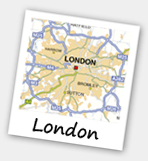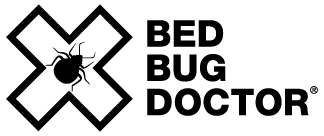|
|
 |
|
|
So you've spotted a bedbug
bite!
The first
thing to remember is that
your main priority is to
contain the bed bugs in one
place. This will aid the
speed and efficiency at
which the bed bug treatment
is carried out. As tempting
as it may be, dragging your
duvet through the house and
sleeping on the sofa will
only spread the bedbug
infestation to the lounge
and sofa area, along with
the hallways and stairs.
When bedding needs to be
washed at high temperatures
(which is part of the
process), we provide a
dissolvable laundry sack to
transport your bedding
through the house to the
washing machine.
Accordingly, it is better to
let the professionals take
over as soon as possible to
avoid making the problem
worse. |
|
 |
|
|
 |
|
|
Bed bug inspection:
The very first step of any
treatment needs to start
with an in-depth but very
careful inspection to
ascertain firstly if there
is an active infestation and
secondly the scale and
locations of the
infestation, all the while
being conscious to limit the
possibility of dispersal and
spreading.
Before the inspection
takes place, the occupant
needs to be made aware of
what the inspection will
involve. This will usually
include a full inspection of
the whole bedroom, including
cupboards and drawers. It
may be necessary to remove
headboards, lift carpets and
dismantle some items. Some
light damage may be required
through the removal of
fabric bases of
divan
beds or sofas. Occupants
will also need to be made
aware that access to the
room will be restricted
during and immediately after
treatment. They should also
be advised of their role
during and after the
treatment process, they
should be educated on how to
avoid re-introducing bedbugs
to the property. The
occupant will also be made
aware that they should not
attempt to remove items from
the room before the
technician undertakes his
inspection, as this can
spread bedbugs and cause
them to disperse.
Through this
inspection, the technician
will Identify the scale of
the infestation and
formulate a treatment plan.
|
|
 |
|
|
 |
|
|
Preparation for bed bug
treatment:
Preparation is crucial in
the
facilitation
of
the treatment process, the
amount of preparation will
depend on the severity of
the bedbug infestation and
will most likely involve the
removal of bedding, soft
furnishings and clothes
from
the immediate
affected
area for laundering.
Books may need to be removed
from shelves and drawers may
need to be emptied. Divan
beds will need to be
upturned and the fabric
bases removed to allow
access and it may be
necessary to temporarily
dismantle wooden beds
and other items of
furniture.
|
|
 |
|
|
 |
|
|
Laundry:
Bedbugs
and their eggs are very
sensitive to heat and can be
killed at temperatures above
45˚C. Therefore laundering
at temperatures above 45˚C
is one of the most effective
chemical free ways to
eradicate bedbugs from
bedding, clothes and soft
furnishings. Care must be
taken to not spread the
bedbug infestation while
transferring items from
infested rooms to the
washing machine. Accordingly
we prefer to use dissolvable
laundry bags for the
transportation of infested
items. Infested linen and
clothing should be washed at
60˚C to ensure a 100% kill
rate. 40˚C washes have been
shown to kill some adult
stage bedbugs but have
proven ineffective against
eggs.
*please note that tumble
drying has also been proven
effective against bedbugs
but a cycle time of 30
minutes is required for
already dry clothes with a
further 30 minutes extra
required for wet clothes. |
|
 |
|
|
 |
|
|
Chemical spray treatment:
COSHH
legislation states that
chemical treatment of pests
should only be used once all
other treatment options have
been considered and
discounted. But the fact is
that non-chemical solutions
are not currently capable of
controlling bedbug
infestations. And
accordingly all relevant
governing bodies have
acknowledged and continue to
promote the safe use of
pesticides as the preferred
treatment for the
extermination of bedbugs. In
accordance with these
governing bodies and best
practice, a COSHH assessment
needs to be carried our
prior to any treatment
involving the use of
chemicals. This document
will take into account
factors such as weather a
pesticide is even required
at all, property location
and environment, formulation
of proposed insecticide,
quantities to be applied,
control measures to prevent
access into the treatment
area and emergency contact
details. Over recent years
it has been noted that bed
bug populations have
developed a resistance to
the most common and
traditional classes of
insecticide (namely
phrethroids and carbamates).
But due to improvements in
their formulation and
synergists, pyrethroid and
carbamate based products
still continue to be
effective against resistant
populations.
|
|
 |
|
|
 |
|
|
Re-application of bedbug
spray treatment:
Depending
on the insecticide applied
and the level of insecticide
resistance in the
population, it may be
necessary to apply a second
or even a third treatment.
Since eggs are more
resistance to insecticides
than any other lifecycle
stage, the minimum interval
time between treatments
should be guided by the egg
hatching time, which in turn
is influenced by
temperature. A two week
interval will usually be
sufficient for all the eggs
to hatch, however longer
intervals may be required in
particularly cooler
climates. |
|
 |
|
|
 |
|
|
Post treatment procedure:
Following
treatment, you will be
advised not to re-enter the
room until the chemical
treatment has dried. You
will be advised to not
vacuum or wash floors &
upholstery for at least 2
weeks. It is also advised
that once treatment has been
successful and your bedbug
infestation has been
successfully treated, all
signs of infestation should
be removed (e.g. dead
bedbugs, feacal spotting,
husks etc..) to avoid
confusion in the future with
a previous historical
infestation. |
|
 |
|
|
|
|
|
|
|
 |
|
|
Booking your
appointment:
 Eradicate
your bed bug problem
today by using one of
our fully trained and
experienced bed bug
technicians. Simply call
us now and speak to a
member of our bookings
team on our 24 hour
booking line:
0207 112 8366
or just send us an
email at
bookings@bedbugdoctor.co.uk.
All our technicians have
unmarked vans and
unbranded uniforms so
you can be assured of a
very discreet service. Eradicate
your bed bug problem
today by using one of
our fully trained and
experienced bed bug
technicians. Simply call
us now and speak to a
member of our bookings
team on our 24 hour
booking line:
0207 112 8366
or just send us an
email at
bookings@bedbugdoctor.co.uk.
All our technicians have
unmarked vans and
unbranded uniforms so
you can be assured of a
very discreet service.
For more in depth info,
please visit our
bedbug treatment &
extermination page.
|
|
|
|
|
|
|
|
|
|
|
|
|
|
|
|
|
|
|
|
|
|
|
|
 |
|
|
|
 |
|
|
Areas covered:
 As
speed is of the essence
when dealing with bed
bugs, we aim to start
your treatment as soon
as possible (depending
upon existing bookings).
We have teams of
professionals ready to
deploy within the London
and M25 area, all fully
trained and experienced. As
speed is of the essence
when dealing with bed
bugs, we aim to start
your treatment as soon
as possible (depending
upon existing bookings).
We have teams of
professionals ready to
deploy within the London
and M25 area, all fully
trained and experienced.
|
|
|
|
|
|
|
|
|
|
|
|
|
|
|
|
|
|
|
|
|
|
|
|
 |
|
|
|
 |
|
|
Corporate rates:
 Bed
Bug Doctor Ltd specialise in the extermination,
detection and preventative treatment of bed bugs for
hotels, youth hostels, shops and care homes. To get
a quote and arrange an on-site visit, please contact
us on
0207 112 8366
or just send us an email
at
bookings@bedbugdoctor.co.uk Bed
Bug Doctor Ltd specialise in the extermination,
detection and preventative treatment of bed bugs for
hotels, youth hostels, shops and care homes. To get
a quote and arrange an on-site visit, please contact
us on
0207 112 8366
or just send us an email
at
bookings@bedbugdoctor.co.uk
**
Landlords and letting agents get special pricing
too, get in touch and find out what we can do for
you today. |
|
|
|
|
|
|
|
|
|
|
|
|
|
|
|
|
|
|
|
|
|
|
|
 |
| |
|
 |
|
|
Contact details:
Bed Bug Doctor Ltd.
180-186 Kings Cross Rd,
London,
England,
WC1X 9DE.
0207 112 8366
info@bedbugdoctor.co.uk
Company No: 07639483 |
|
|
|
|
|
|
|
|
|
|
|
|
|
|
|
|
|
|
|
|
|
|
 |
| |
|
 |
|
|
Bed Bug news:
|
|
|
 |
|
|
|
© Bed Bug Doctor Ltd
London 2014 |
|

